|
Greece - Kefalonia |
 |

Kefalonia - May 2000
Kefalonia is the largest of the Ionian islands, and the setting for the best-selling
novel Captain Corelli's Mandolin. Situated to the west of mainland Greece,
the island was virtually flattened by a severe earthquake in 1953. The Ionians are
famous as the main European nesting ground for the protected Loggerhead Turtle, who
use the beaches at the south of the island near Skala to lay eggs.
| Fiskardo |
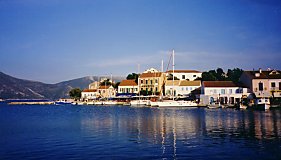 |
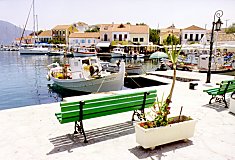 |
| We stayed on the outskirts of Fiskardo, one of the few towns left
untouched by the 1953 earthquake, which levelled most of the island. |
Located at the far north of the island the geology here protected the area from the quake.
| Fiskardo is infeasibly pretty,with it's Venetian architecture and picturesque
harbour. The downside is the number of visitors it attracts, mostly yacht flotillas
which pack in the harbour every night. |
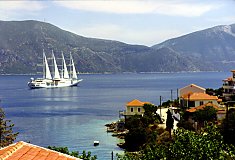
The view from our villa towards Ithaca, showing one of the boats that wouldn't fit into
Fiskardo's harbour |
|
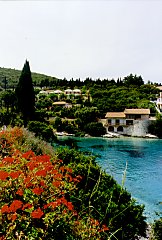
View of our villa, at the south end of Fiskardo. |
| Myrtos |
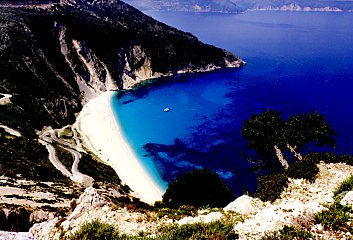
Myrtos Bay is one of the most dramatic in the whole of Greece, the rich colours of the sea
contrast starkly with the whiteness of the beach. |
| Argostoli |
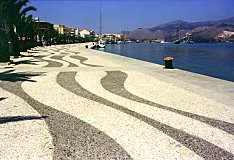 |
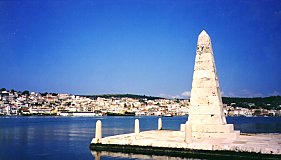 |
| Argostoli has been the capital of the Island since 1757, though it was
totally rebuilt after the earthquake in 1953. A bridge constructed by the British in
1813 links the town to the opposite side of the bay, and the road north, the obelisk shown
in the photograph commemorates the completion of the bridge. |
| Assos |
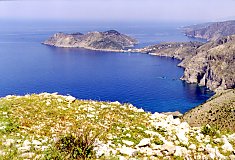 |
We visited Assos, which is huddled in the isthmus between the mainland
and a peninsular, in the evening. David watched the sun go down from the ruins of
the Venetian fort at the top of the hill. Kathy decided she preferred to sit in the
taverna with a glass of wine than take the 1/2 hour hike to the top. |
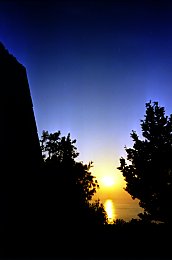
Sunset from the Fort |
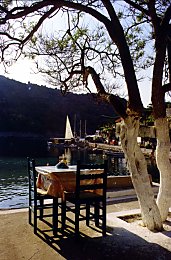
View from a taverna |
| Melisani Lake |
Drogarati Cave |
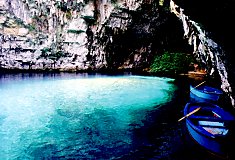
This underground lake was discovered after the 1953 earthquake, when the part of the
rock roof collapsed. The amazing colours of the water are best appreciated
when the sun is high. |
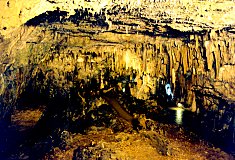
Because of it's excellent acoustics, the large stalagmite infested chamber has been used
for concerts. Maria Callas sang here. |
| Lixouri |
Agios Evfimia |
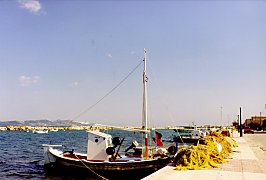
The Lixouri peninsular is quieter than the main part of the island. The major town
is Lixouri, which lies directly across the bay from the islands capital, Argostoli. |
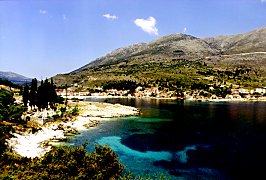
Situated on the east coast of the island, north of Sami, Agios Evfimia is a pleasant
little fishing village. We visited twice because of the excellent Stifado
served in a taverna on the harbour wall. |
| St. Gerassimos |
Foki Bay |
St. Gerassimos monastery attracts pilgrims from all over Greece, he was
famed as a miracle worker, who re-organised the monastery on the Omala plain,
conveniently the best wine producing land of the island.
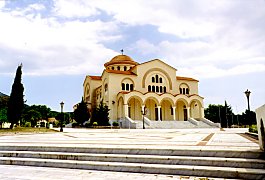
When his body was moved in 1581, 2 years after his death, it was found to be in perfect
condition, and was said to have even exuded a pleasant odour! |
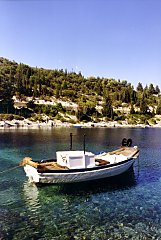
Just south of our villa in Fiskardo, Foki Bay is a quiet beach, ideal for relaxing, often
there are yachts moored there. |
| Sami |
Diving |
| Sami was being used for the making of the Captain Corelli film
at the time of our visit. |
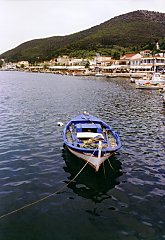 |
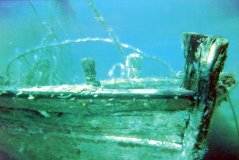
David went diving in a bay near Fiskardo, the highlights were the wreck shown above and a
jellyfish which was just to transparent to be photographed. |

|



















